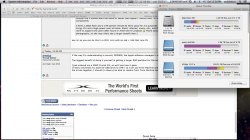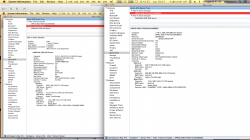I'm thinking of moving things around in my mini. I didn't order a SSD with my mini, but I'm thinking of putting a 256GB SSD in to host the OS on along with some common apps and 1 of my 3 VM's and then keeping my 1TB spinner as a second internal drive (I already have a 1TB USB external).
Is it behoovant of me to move the drives around internally and do a fresh ML install to the SSD, or should I keep my current drive as the boot drive, move the OS over with CarbonCopyCloner, leaving the apps and data on the spinner and then making the SSD the bootable drive?
Or I could just pull the current spinner drive and replace with the SSD and just have 2 externals???
**edit**
may have found info I'm requesting here. whoops
Is it behoovant of me to move the drives around internally and do a fresh ML install to the SSD, or should I keep my current drive as the boot drive, move the OS over with CarbonCopyCloner, leaving the apps and data on the spinner and then making the SSD the bootable drive?
Or I could just pull the current spinner drive and replace with the SSD and just have 2 externals???
**edit**
may have found info I'm requesting here. whoops
Last edited:



